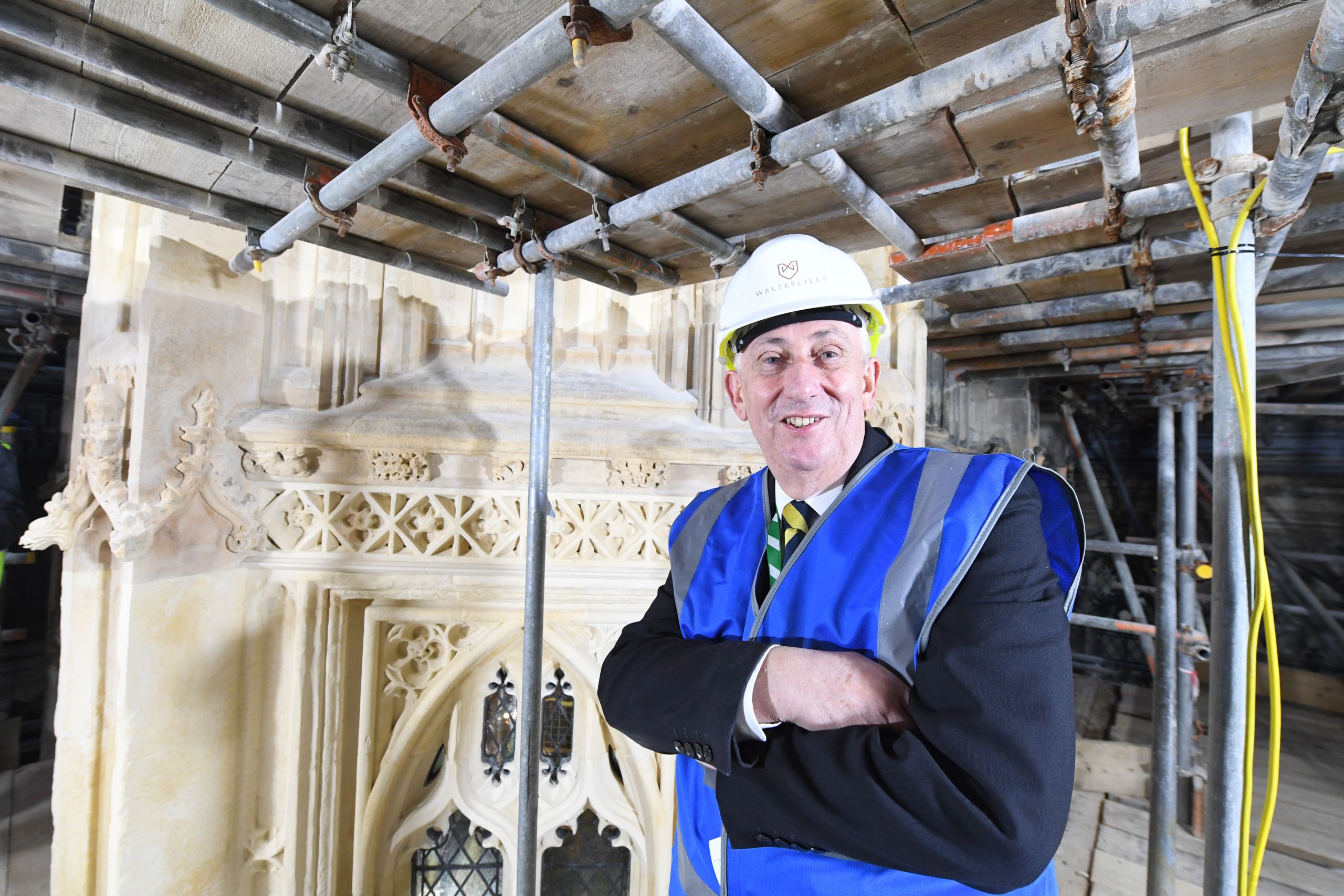Restoration of Parliament's historic Cloister Court
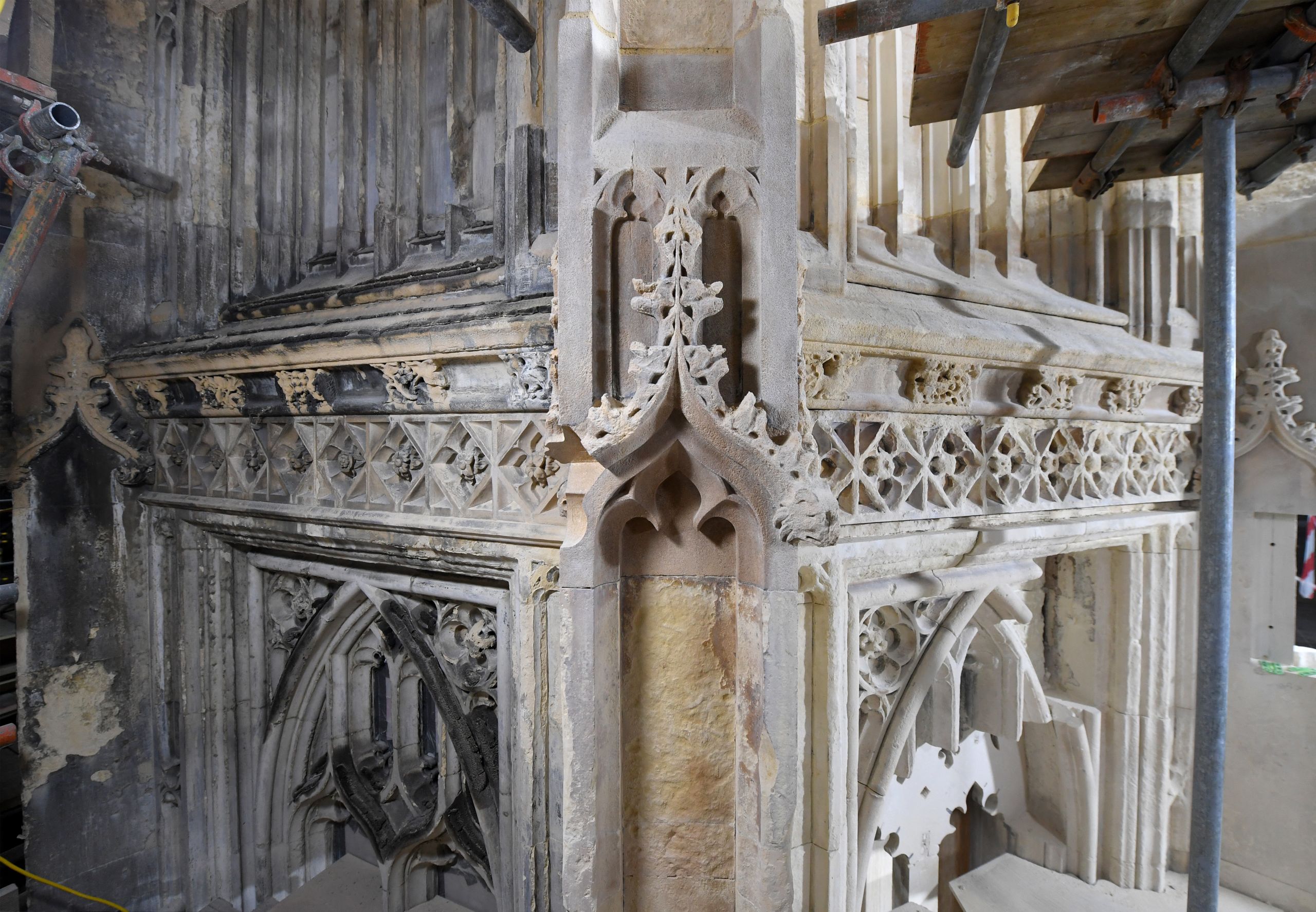
Hidden away in the Palace of Westminster lies the 16th century Cloister Court, one of the most ancient and intricate parts of the sprawling building. Frequented by Henry VIII, once home to the Speaker of the House of Commons, almost devastated by fire and partially destroyed by a bomb, this beautiful, gothic cloister has certainly had an eventful history.
Filled with delicately carved gargoyles and elaborate flourishes, the cloister was the centrepiece to a lavish medieval palace. Now, 500 years after it was built, it is in urgent need of repair.
Parliament’s Strategic Estates team is combining state-of-the-art conservation technology with traditional stone carving expertise to restore this historic hidden gem to its former glory.
History of the Cloister
‘The idea of a cloister on the site comes from the time of King Edward III, when he founded the College of St Stephen in 1348 to go with the Chapel of St Stephen.’ Says Parliament’s Estates Historian Mark Collins.
‘It was likely designed by William Vertue, who also produced the Henry VII Chapel at Westminster Abbey – it serves as a superb example of gothic architecture.
’The building had only a short history as a cloister - during the Reformation, St Stephen’s College was dissolved after the Dissolution of the Colleges Act 1547, and the cloister became home to the Auditor of the Exchequer. From the late 18th Century it was also used as the Speaker’s house.’

©UK Parliament/Jessica Taylor
©UK Parliament/Jessica Taylor
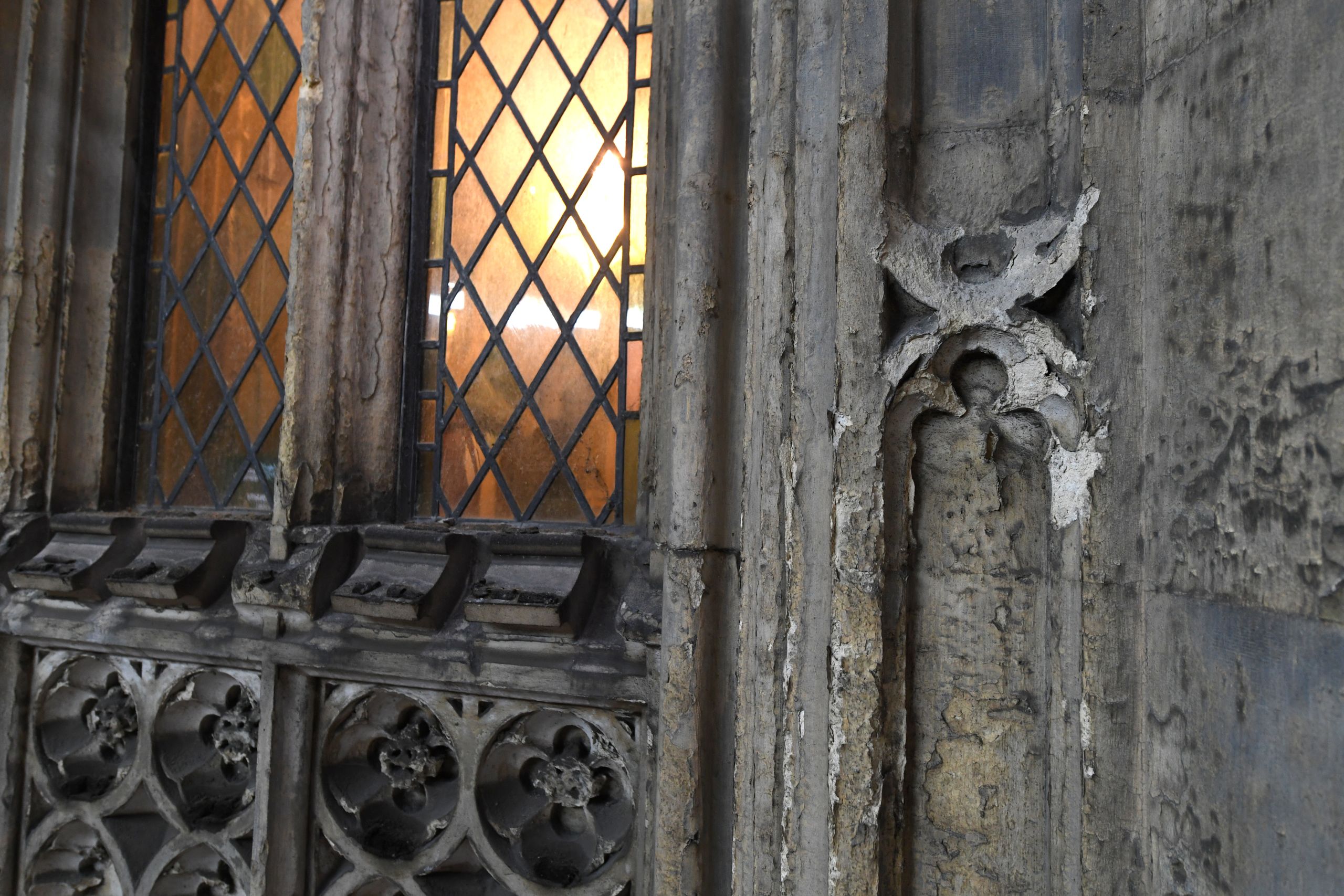
©UK Parliament/Jessica Taylor
©UK Parliament/Jessica Taylor
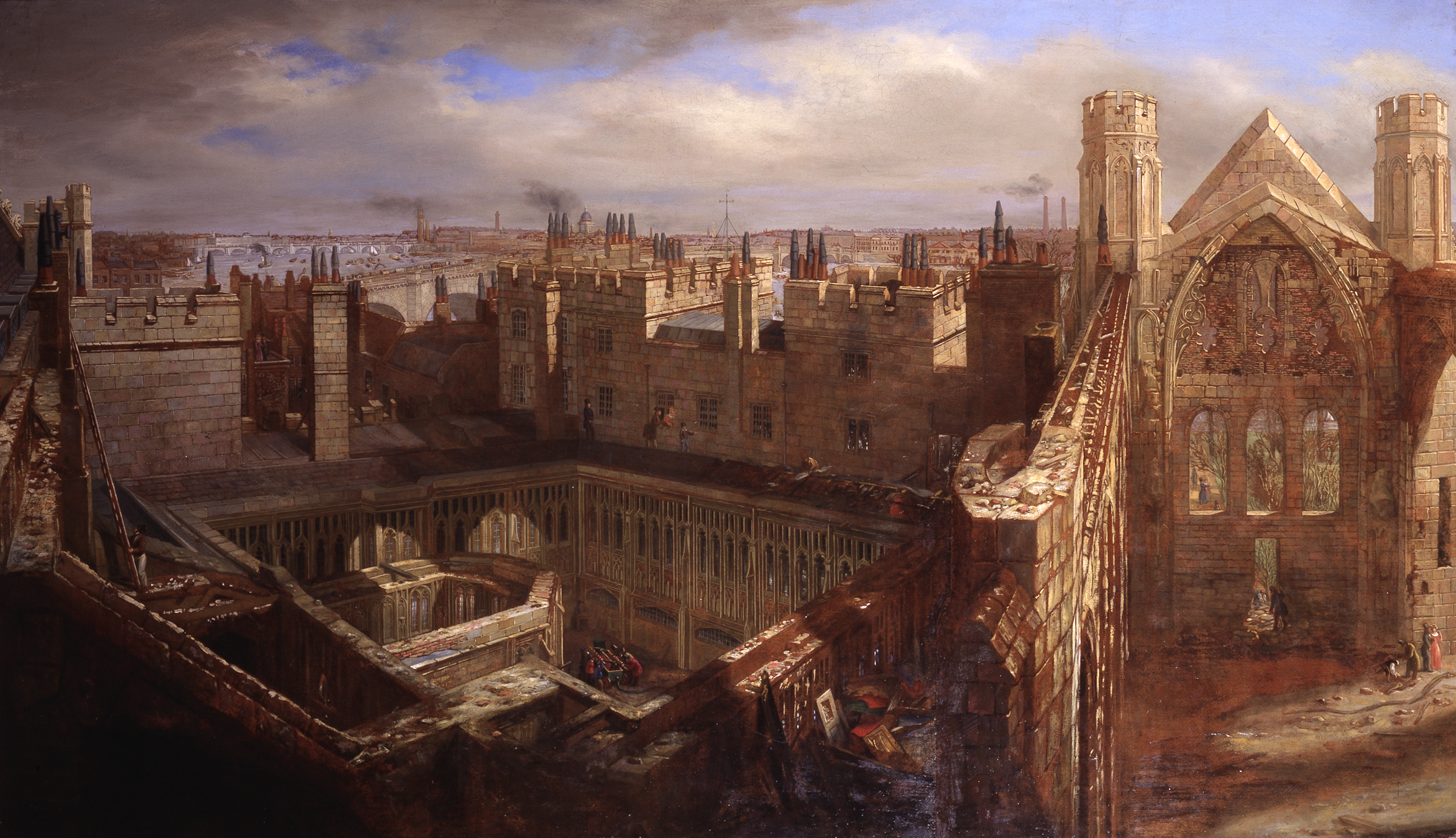
The great fire of 1834
In 1834 a great fire ravaged the Palace of Westminster, destroying almost all of the original building. Cloister Court was one of the few areas of the palace to be saved, and, along with Westminster Hall and the Chapel of St Mary Undercroft, remains one of the most ancient parts of the Parliamentary Estate today.
After the fire, architect Charles Barry was chosen to design a new Parliament. He argued against the idea of the cloister being used as a cloakroom but was overruled and coat racks (still visible today) were installed around the cloister. Cloister Court was used as a cloakroom until 1940, when it was hit by a bomb during the Second World War – completely destroying two of its sides.

©UK Parliament/Jessica Taylor
©UK Parliament/Jessica Taylor

Modern usage
In 1967 as the need for MPs to have office space grew, Cloister Court was repurposed as office accommodation and, by the 1990s, was home to the Parliamentary Labour Party. However, the space was not entirely suitable for office accommodation:
‘Cloister Court was in reasonable condition until the late 1960s,’ explains Collins, ‘but it has been degrading much more rapidly over the last 50 years. The intensive use as office space accelerated dilapidation of the stonework, and radiators and movement of furniture has caused yet more damage.’
In addition, the various repairs carried out to the site over the centuries have caused further damage, with the use of clashing stone types leading to the production of damaging salts, which cause stonework to crumble.
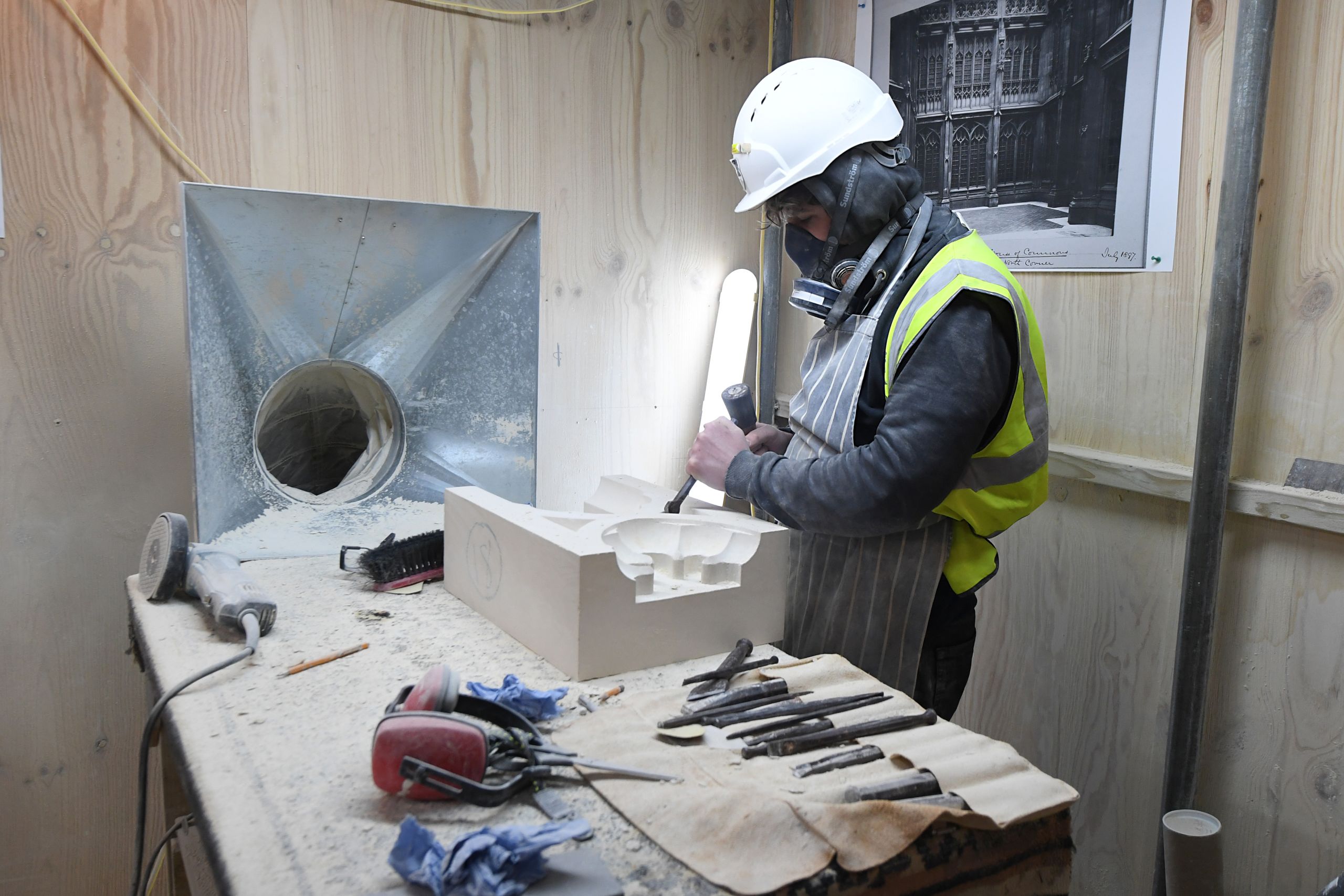
©UK Parliament/Jessica Taylor
©UK Parliament/Jessica Taylor
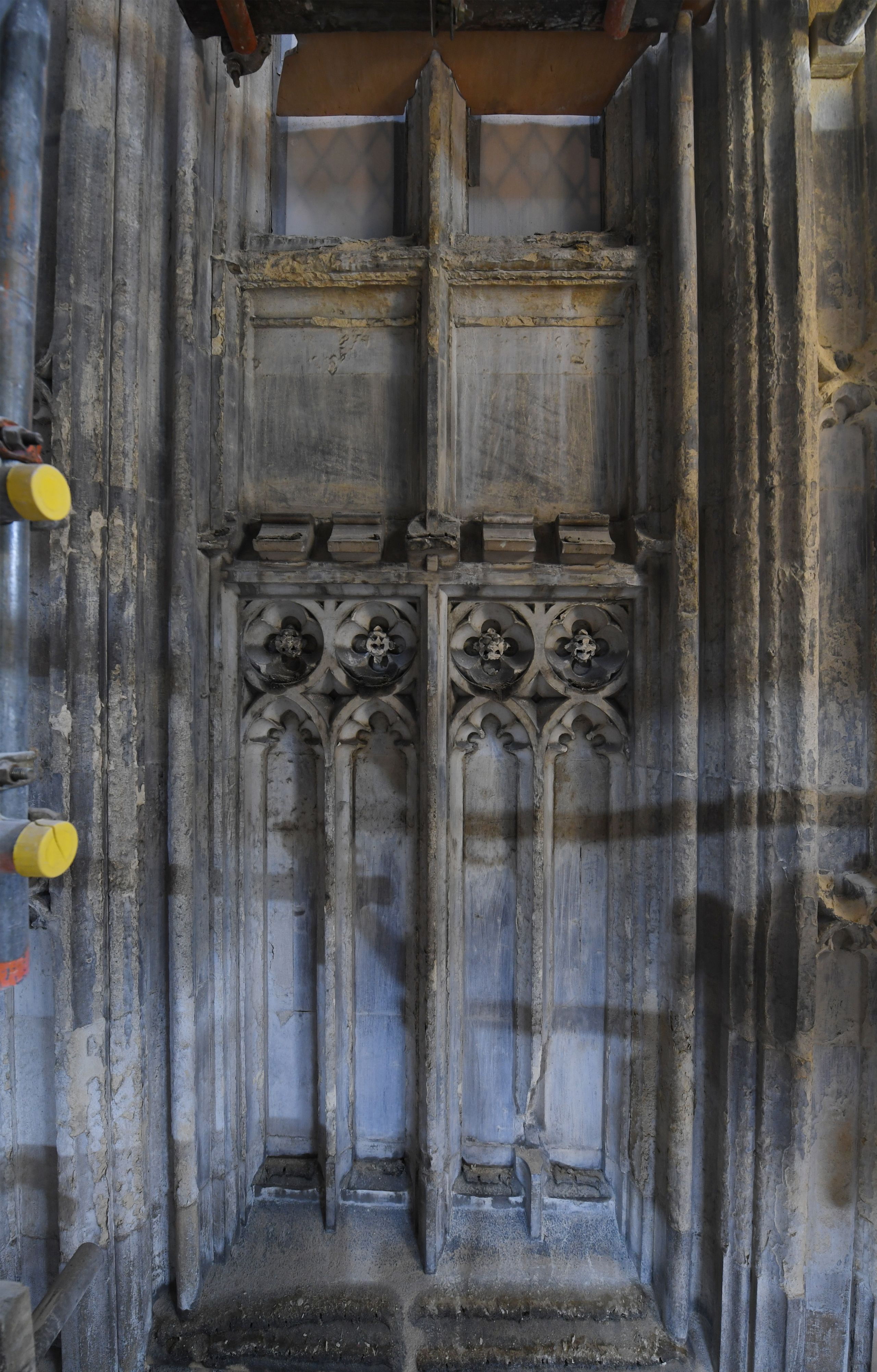
©UK Parliament/Jessica Taylor
©UK Parliament/Jessica Taylor
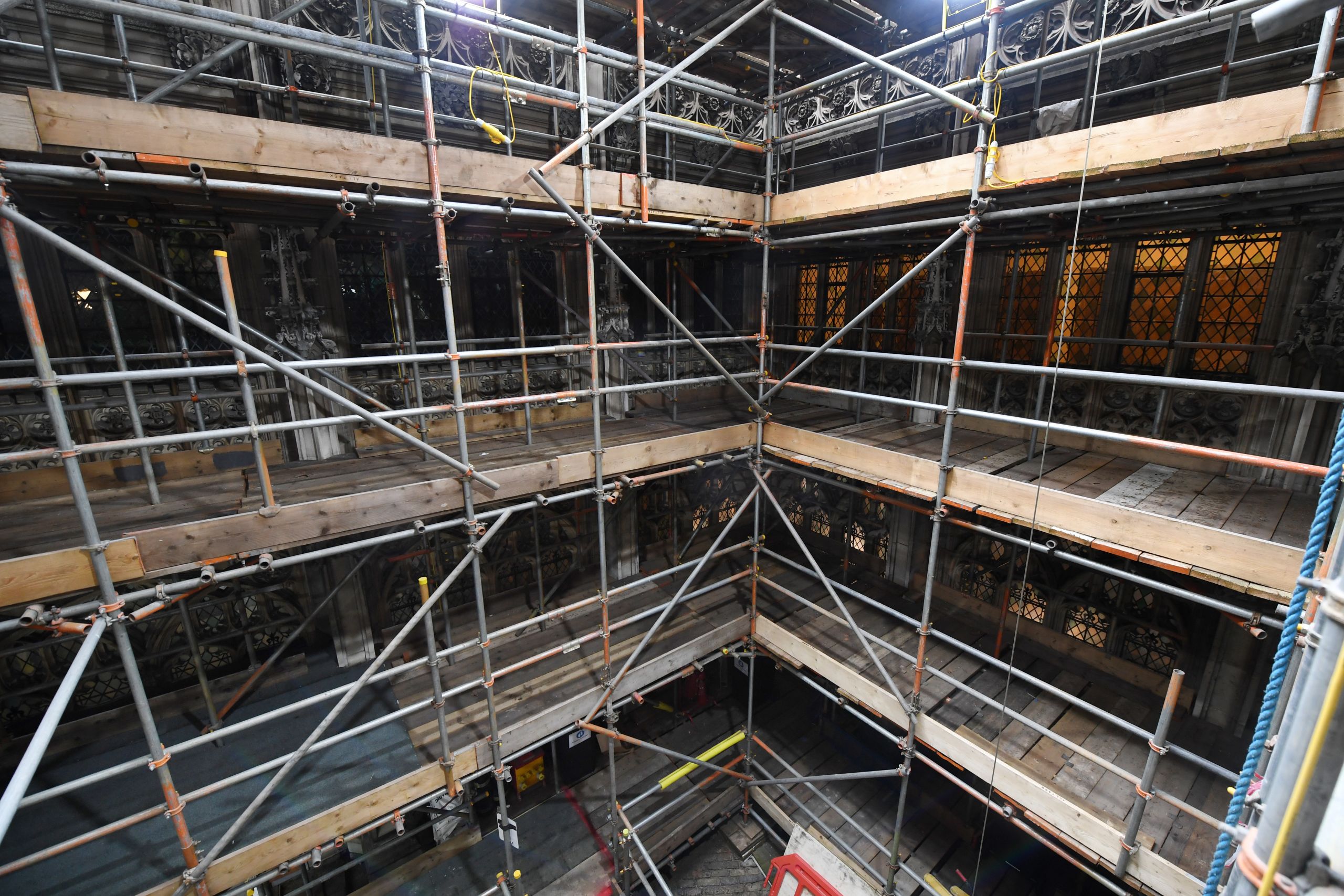
Conserving the Cloister
Work to conserve Cloister Court has been tricky. Parliament’s Head of Architecture and Heritage, Adam Watrobski, explains. “We actually carried out the first cleaning trials and stone analysis in 2004 and then repeated this in 2013. It's taken the best part of 16 years to get this far, because the cloisters have always been occupied.’
Work is now progressing, and one bay of the cloister has been completed. Carried out by specialist stone masons, this complex work involves preserving the existing stone as well as re-carving, by hand, the parts that are no longer there. As Watrobski explains, ‘the real skill lies in picking up patterns from adjacent parts of the cloister and old photographs, recreating that pattern on paper and finally on a plastic film which acts as a template from which to cut the stone.’
‘We have identified all the different stones and the period in which they were put in, so we know which bits are new and which are older and more important. We try to keep as much of the medieval part in as possible. it’s a challenge though - decay is exponential. Once the surface and the patterns go, you're just left with a crumbling pile of stone, and from there it decays quicker and quicker – so it's visibly much worse than it ever was when we started looking at it back in 2004.’
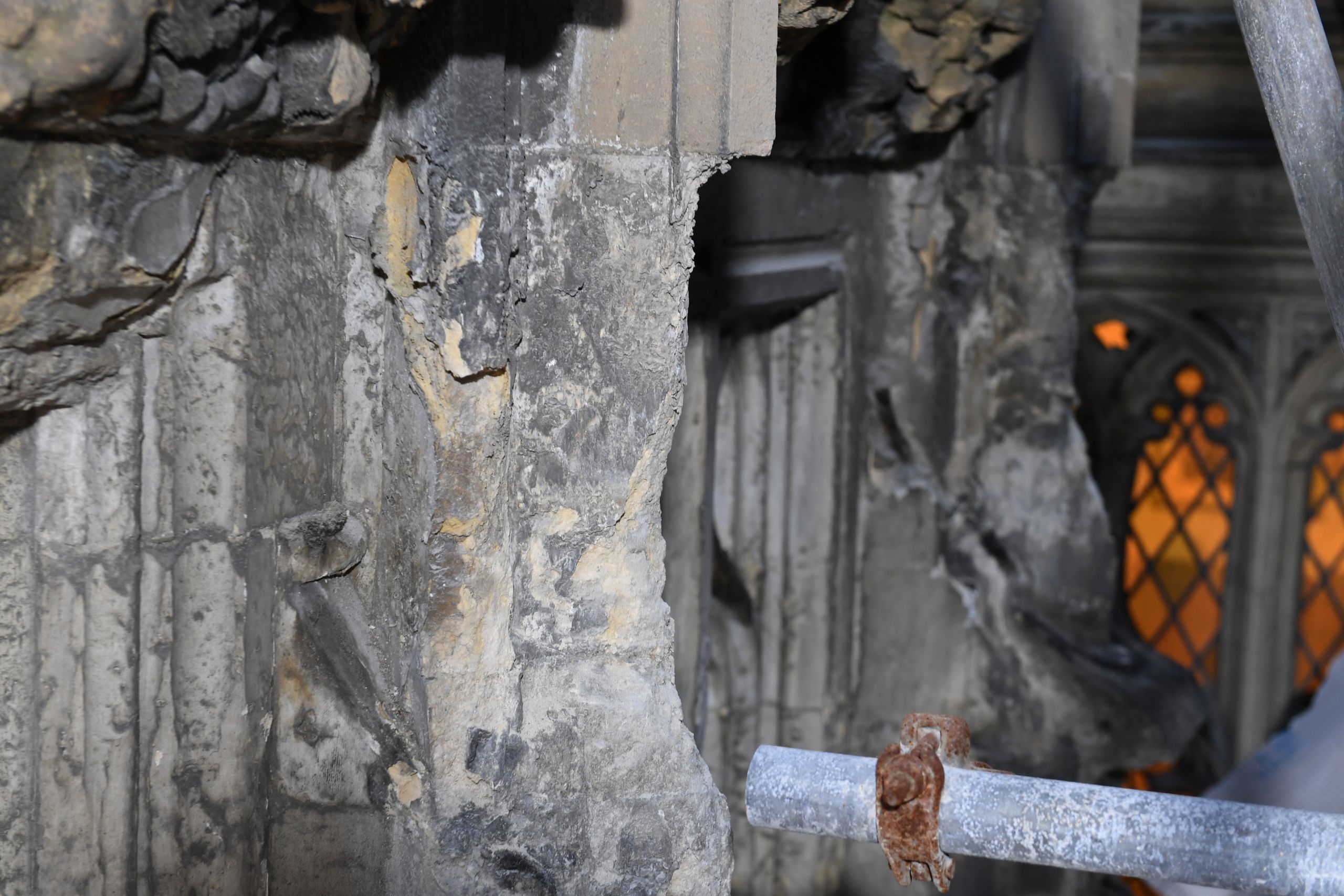
©UK Parliament/Jessica Taylor
©UK Parliament/Jessica Taylor
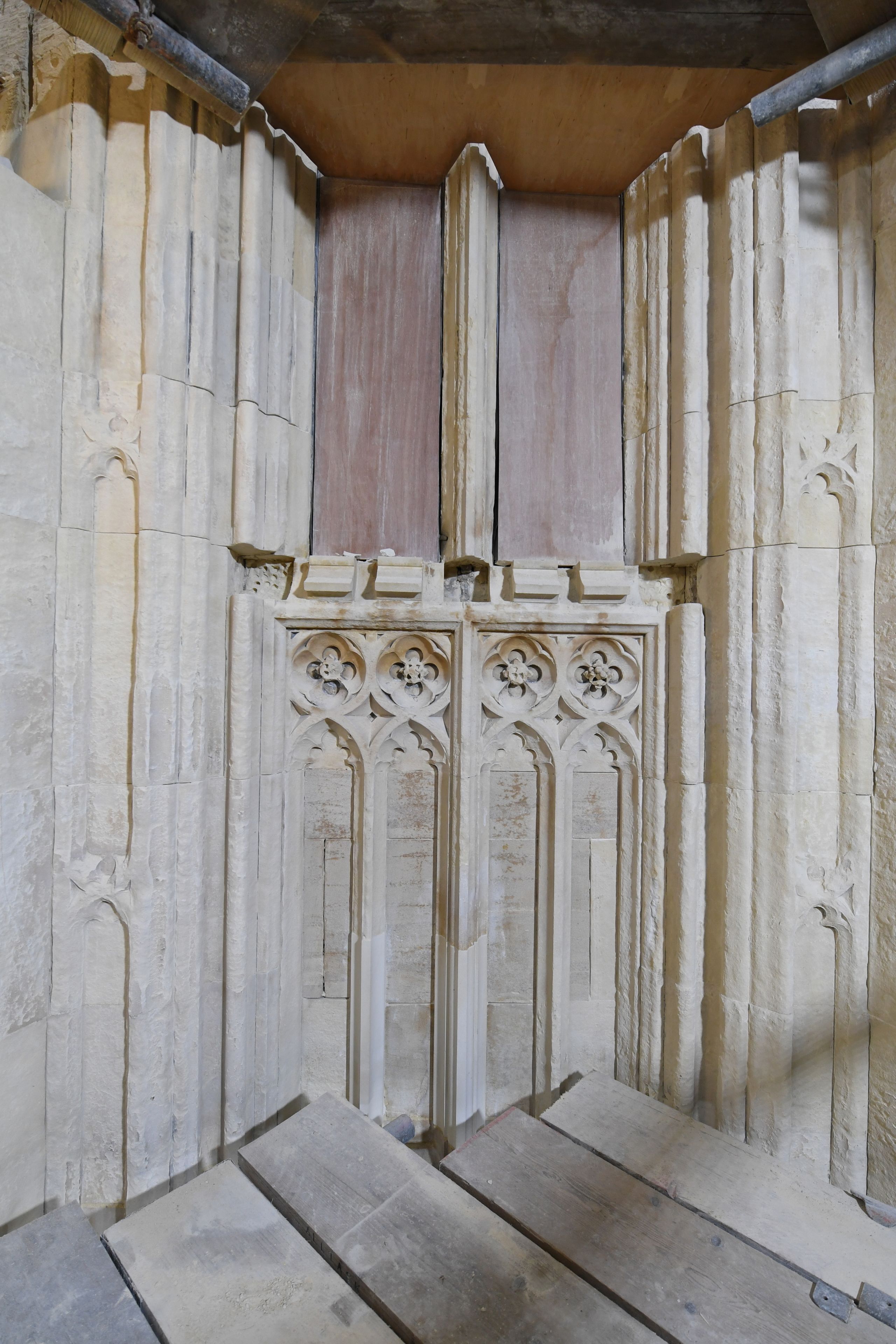
©UK Parliament/Jessica Taylor
©UK Parliament/Jessica Taylor
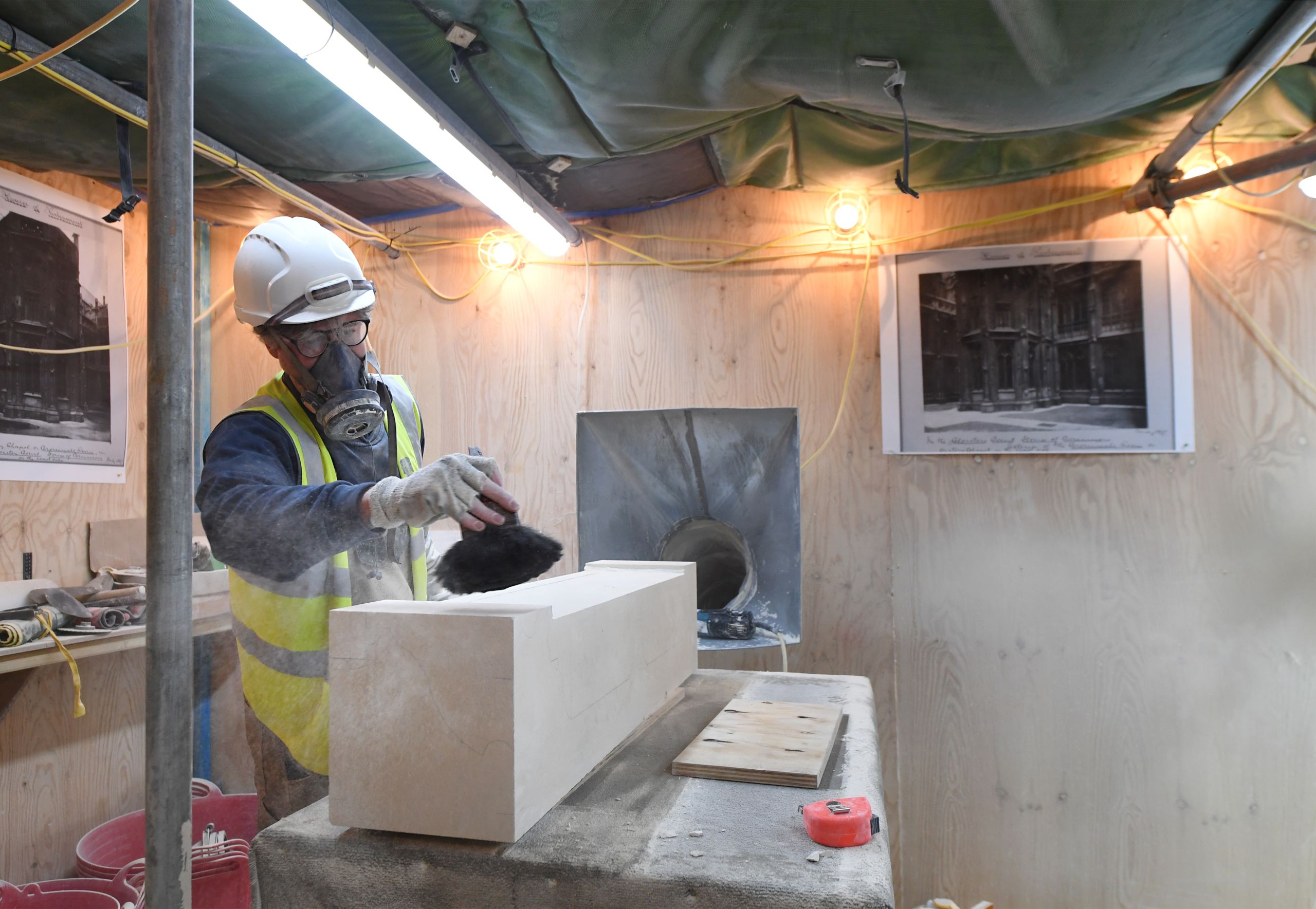
Today at the Cloister
House of Commons Speaker, Sir Lindsay Hoyle, has had first-hand experience of the work that has been carried out. ‘The workmanship was incredible’ he reports. ‘To see the contrast between this warm, top-of-the-milk – almost glowing – stonework, with its dirty, blackened, polluted and decaying original is stark,’ he said.
‘The attention to detail that has brought back to life these intricate carvings of griffins, lions and rosettes, is a sight to behold.
‘To think that my predecessor Henry Addington – 23 Speakers back – first lived here, and that Speaker Charles Abbot had visitors using the refurbished Cloisters as a waiting room before meeting him in his library is amazing. It would be wonderful if we could bring the rest of the court up to this standard.’
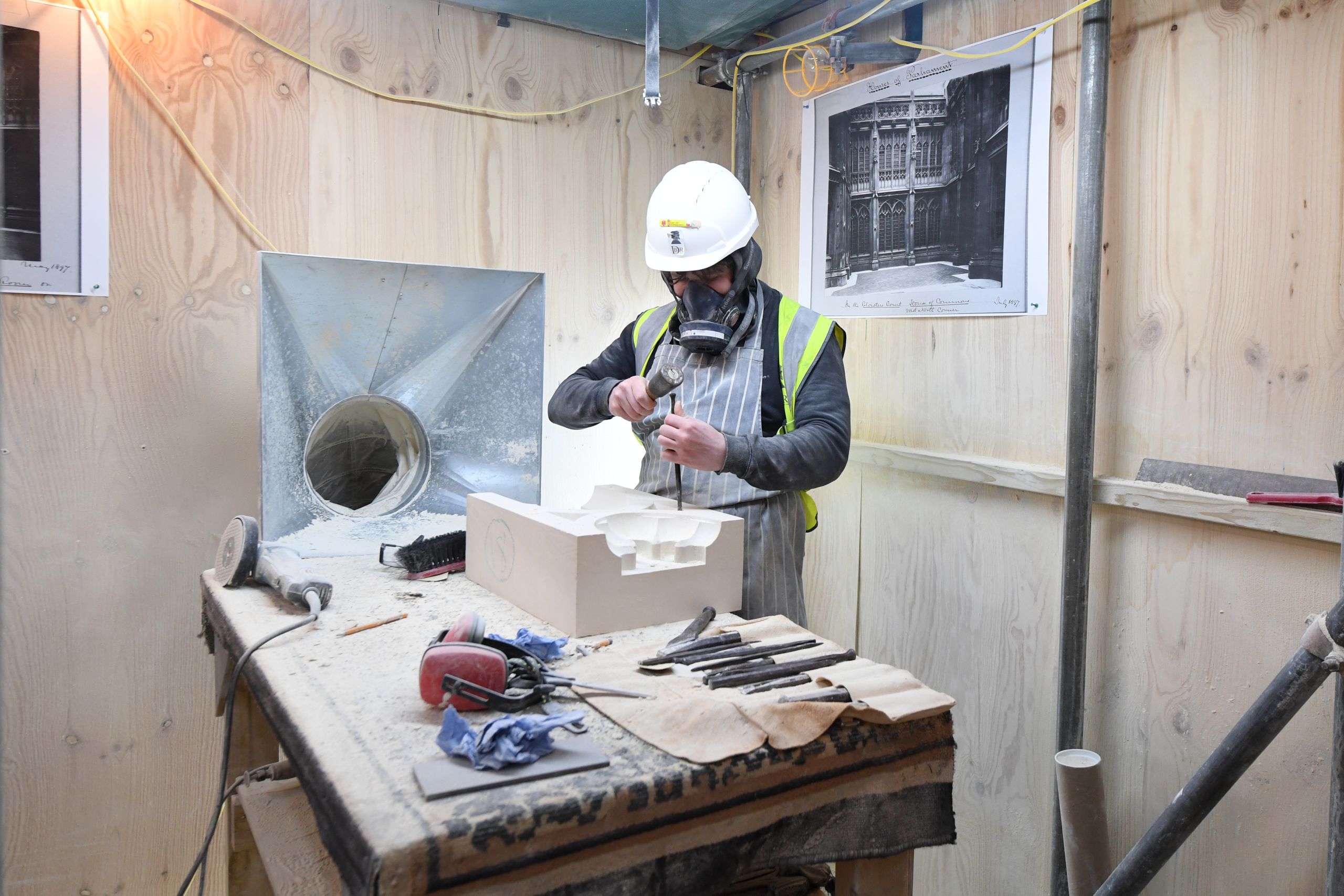
©UK Parliament/Jessica Taylor
©UK Parliament/Jessica Taylor
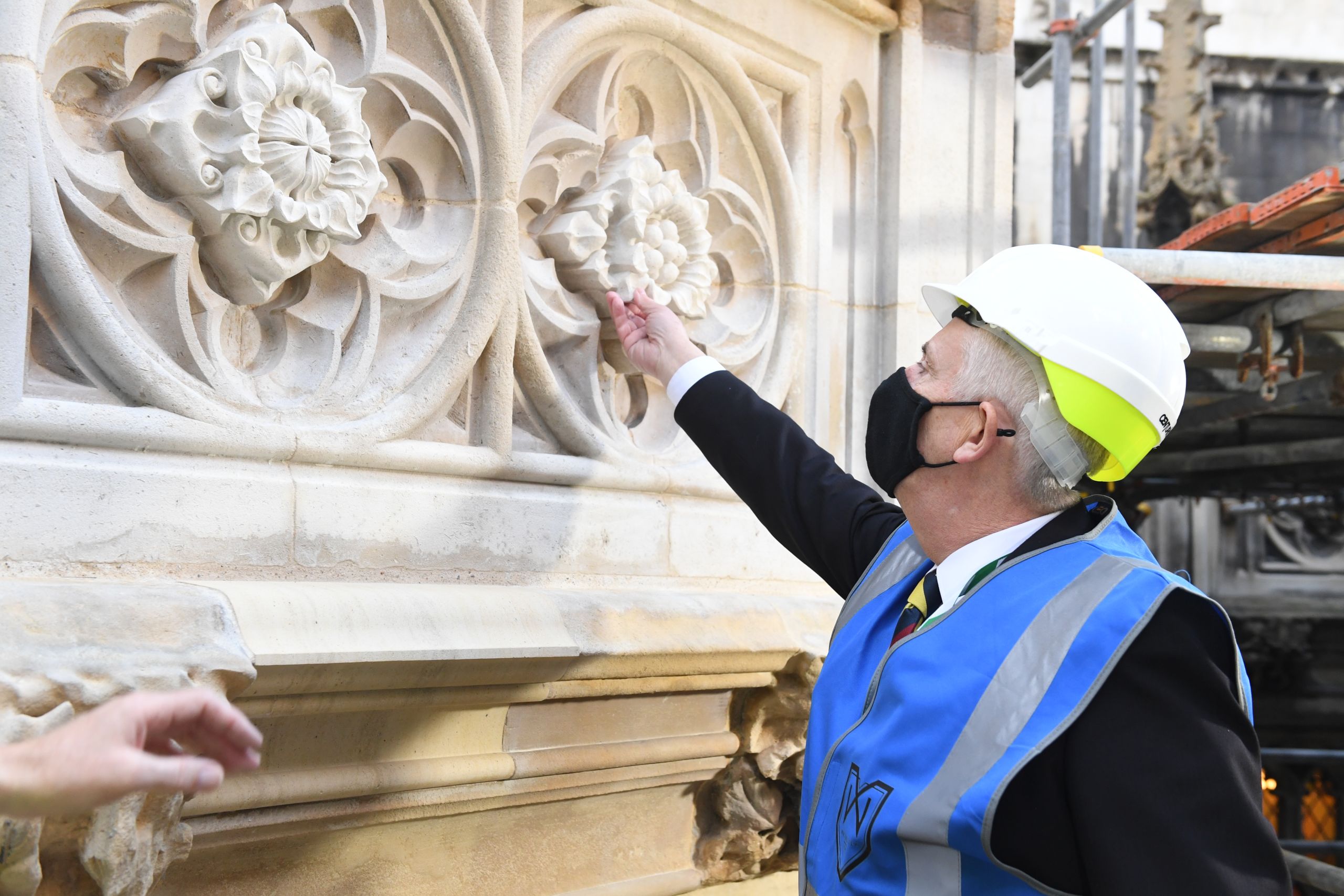
Speaker of the House of Commons, Sir Lindsay Hoyle visiting the Cloisters ©UK Parliament/Jessica Taylor
Speaker of the House of Commons, Sir Lindsay Hoyle visiting the Cloisters ©UK Parliament/Jessica Taylor
